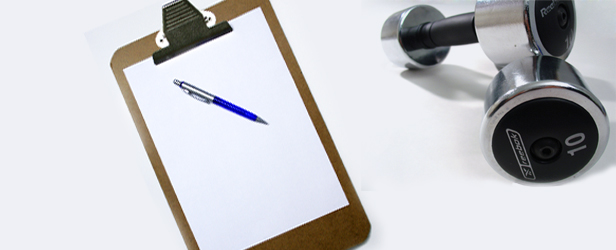
Stop training your clients. Seriously, stop training them. I want you to start educating your clients. What’s the difference between training clients and educating them? Well, in my opinion, it’s the difference between bad fitness professionals and good ones. Curious? Confused? Agitated maybe? Allow me to explain…
Training clients entails little more than programming and coaching. These two tasks are obviously crucial undertakings when it comes to working with clients. However, focusing on these two things alone undermines the potential utility of a coach or trainer. Most fitness professionals can use their knowledge and experience to provide much more value to their customers beyond simply supplying them with programs and leading them through their sessions.
New clients are often new to strength training. If they aren't new to strength training, they are usually unfamiliar with "correct" strength training. Either way, introducing these people to the skills, habits, and knowledge they need in order to be successful as efficiently and effectively as possible is paramount. Furthermore, presenting this information in an organized, sequential manner with a policy of repetition and the goal of mastery will enable clients to enjoy a lifetime of lifting success.
Conversely, the typically unmethodical approach of training clients and imparting information on the fly leaves too much room for omissions. In addition, it is difficult to analyze and modify an educational process that has never been thoroughly contemplated and outlined. Lastly, it becomes increasingly difficult to manage a nonexistent or loosely theorized training process as new clients arrive and sessions become more crowded and hectic.
Sure, many of these clients may be enjoying decent results thanks to this training, but they remain overwhelmingly dependent on their coach or trainer. While this sounds like a good money-making strategy for fitness professionals, it is actually a detrimental business practice. If every client in a gym during a given period of time needs to have his hand held throughout his entire session, that gym’s capacity is limited by the number of people the staff can successfully and simultaneously attend to.
Conversely, when clients are systematically educated rather than simply trained, they eventually become largely self-reliant. When clients have the ability to essentially train themselves, coaches are freed to educate new clients. For example, instead of guiding a group of six people through an entire semi-private training session, a coach can oversee six experienced clients and begin breaking in four more. This strategy allows the fitness professional to help as many people as possible, and it also enables him to maximize the amount of money he makes during each time slot. However, the effectiveness of this advantageous strategy hinges on the quality of the coach or trainer’s systematic client education plan.
Every fitness professional’s education system will be different because the training practices he trusts in, the clients he normally encounters, and the space and equipment he has available will impact his views. That said, most systems are going to share a few important themes:
1. Identify your basics:
The process of outlining a lifting education system can be very enlightening, as it forces fitness professionals to identify what they believe are the keys to success in the practice of strength and conditioning. These keys will vary from one coach or trainer to another, and yes, some answers are better than others. Regardless, pinpointing the crucial aspects of your education process and making an effort to highlight these particulars in the gym will make your teaching more focused.
2. Stagger important points:
If you overwhelm clients with too much knowledge too soon, they will have a difficult time retaining important information. It is better to stagger your main points and present them in manageable chunks, as this allows people to successfully assimilate the skills, habits, and knowledge necessary for continued growth. Fitness professionals must isolate the most important bits of information they wish to impart upon their clients and sequence these details in appropriate intervals.
3. Repeat, repeat, and repeat:
Regardless of the various means and methods different coaches regularly employ, every lifting education system must embrace a policy of repetition. If you have ever trained anyone, you know that people can forget exercises and other information from one session to the next. Introducing anything only once is usually ineffective and neglecting to habitually reiterate important concepts guarantees you will be forced to do so later on. Become a proactive repeater rather than a reactive one, and you will be able to prevent problems before they appear.
4. Write it out and check it off:
Every coach should carry a clipboard (or for the ahead of the curve, tech-savvy fitness professionals, a tablet computer). On that clipboard, there should be papers that have each client’s program and papers that have a checklist of the coach’s teaching points. Good coaches realize that rather than relying solely on their memories, they should utilize tools that guarantee that they don't neglect any steps of their purposefully designed education system.
Educating is similar to training, but it is more organized and there is a clearer intent. Formulating an effective lifting education plan ensures that your clients will lift the way you want them to lift, act the way you want them to act, and think the way you want them to think. If your system does not produce the results you desire, you can modify it because it is a tangible entity rather than an indiscriminate affair.
Go forth and contemplate and then educate!









